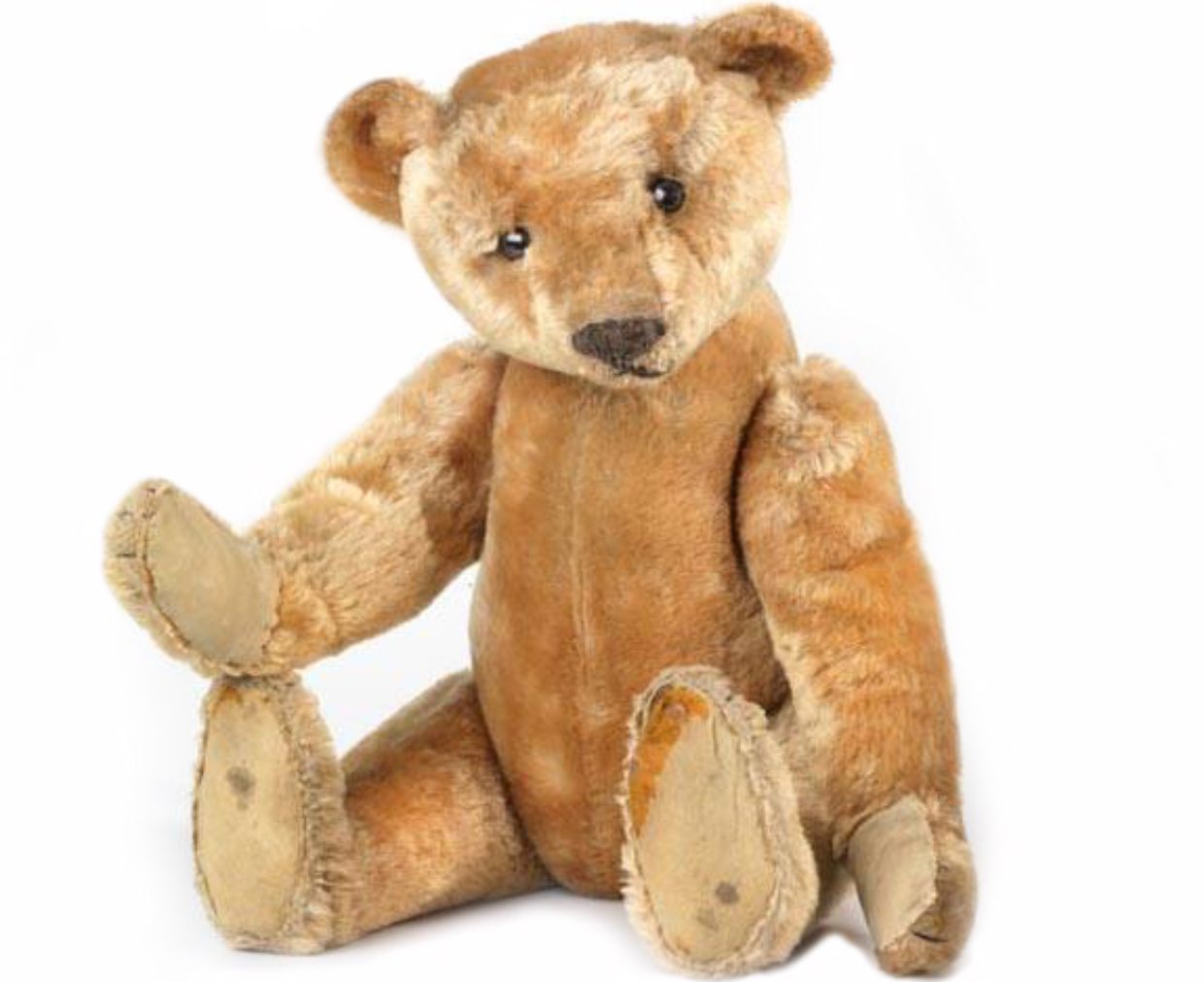Its designation stands for “P” = plush, “G” = rod assembly (Gestänge), “B” = moveable (beweglich) and it measures 35 cm sitting down.
It’s a minor sensation: the Steiff archivists could hardly believe their eyes when it suddenly cropped up in 2009. Its design and the fixture of its limbs indicate that it is from 1904 and is the hitherto missing link between two teddy bear designs.
But let’s start at the beginning: it was 1902 when the Steiff firm presented the model “PB 55”, the first teddy bears in the world with moveable limbs. This bear, 55 cm in length, had a sealing wax nose, its inner joints secured with string, and was stuffed with wood wool. Apart from which, it was hard and heavy and therefore didn’t appeal to customers so much.
Richard Steiff, the nephew of the firm’s foundress Margarete Steiff, addressed this problem and two years later brought out the “PB 28” and the “PB 35”. These bears still had a sealing wax nose, but were smaller (28 and 35 cm) and had an interior joint system made of metal rods. To stop the rods slipping out of place, the bears were stuffed, as ever, with wood wool, which is why, although now smaller, they remained relatively heavy.
Until the discovery of the “PGB 35”, it was thought that the “PAB” models brought out in 1905 were the direct successors to these heavy teddies with sealing wax noses. But this irritated the specialists, since the “PAB” models were quite different in design from their predecessors. They had soft, hand-sewn noses and were equipped with a revolutionary new method to fix the limbs: arms, legs and head were now joined through a system of cardboard, metal discs and splints. This method without metal rods had the advantage of being able to stuff the bears more loosely and therefore reduce about 40 percent of their weight. They looked friendly, they were soft, and customers loved them!
The rediscovery of the “PGB 35” almost a hundred years after it was first made at last clarified the step from the “PB models” to the “PAB” models, enriching teddy bear history with a loveable, dark-blonde exponent.
